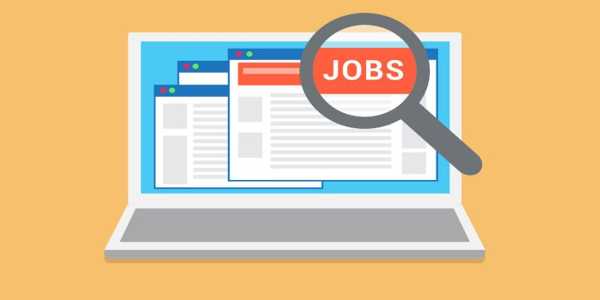Top Resume Tips That Increase Interview Calls
Are you sending out resumes but not hearing back? With hundreds of applicants often competing for the same position, getting your resume noticed can feel like finding a needle in a haystack. But here's the good news—most resumes fail for avoidable reasons.
You don’t need to be a professional writer to craft a winning resume. What you do need is the right approach, the right strategy, and a clear understanding of what recruiters and hiring managers actually look for. Here are some of the top resume tips that can turn your job applications into interview calls.
Tailor Your Resume To Each Job
You might think that one solid resume should do the trick for every job you apply to. But that’s one of the biggest mistakes job seekers make.
Why tailoring works:
Hiring managers are looking for candidates who fit their specific needs. If your resume reads like a generic pitch, it won't stand out.
What to do:
- Read the job description carefully.
- Highlight keywords, skills, and phrases the company uses.
- Match your resume content to those keywords where relevant.
Example:
If the role calls for "project management experience with cross-functional teams," make sure that phrase appears in your resume—if it applies to you.
Lead With A Strong Summary
Your resume has just seconds to impress. The top section of your resume is prime real estate. Make it count.
Avoid:
Overused phrases like "hard-working professional seeking opportunities for growth."
Do this instead:
Craft a clear and energetic summary that speaks directly to the job you're applying for.
For example:
Marketing strategist with 6+ years of experience driving customer engagement through data-driven campaigns. Proven record of increasing conversion rates by up to 35%."
This gives hiring managers a reason to keep reading.
Use Quantifiable Achievements
Numbers talk—and recruiters listen.

It’s one thing to say, “Managed social media accounts.” It’s another to say, “Grew Instagram followers from 3K to 20K in six months.”
Why this matters:
Numbers help recruiters visualize your impact. They create trust and make your resume more compelling.
Look for chances to quantify:
- How much did you increase sales or traffic?
- How many projects did you manage at once?
- What was the size of the team or budget you oversaw?
Even soft skills can be supported by data. If you led a team, mention its size. If you improved processes, estimate the time or cost savings.
Keep It Clean And Easy To Read
If your resume looks crowded or cluttered, it won’t get read—plain and simple.
Tips to improve readability:
- Use a clean, professional font (like Calibri, Arial, or Helvetica).
- Stick to one or two font sizes and styles.
- Leave enough white space.
- Keep bullet points short and punchy (1–2 lines max).
What to avoid:
- Long paragraphs
- Fancy fonts or colors
- Dense blocks of text
- Unnecessary graphics (unless you're in a creative field)
Pro tip:
Use bold for job titles and italics for companies or dates to create a clear hierarchy.
Focus On The Top Half
Most recruiters don’t read every line of your resume. They scan from the top, quickly deciding whether to keep reading.
Make sure the top half includes:
- A targeted headline (e.g., “Experienced Software Developer | React & Node.js Specialist”)
- A short, high-impact summary
- Key skills or highlights
If you can catch their attention in the first 10 seconds, you increase your chances of landing an interview.
Don’t Bury the Skills Section
Your skills should be easy to find, not buried at the bottom.
What to include:
- Tools (Excel, Salesforce, Figma)
- Languages (Python, Spanish)
- Certifications (PMP, Google Analytics)
- Soft skills only if they’re backed by results (e.g., “Leadership – Led a team of 12”)
Bonus tip:
If the job description mentions specific software or systems, include them if you've used them before. Some companies use Applicant Tracking Systems (ATS), which scan resumes for these keywords.
Cut The Fluff
You don’t need to include everything you’ve ever done. The goal is relevance, not length.
Keep in mind:
- Resumes are not autobiographies.
- Focus on the last 10–15 years of experience.
- Stick to the roles that align best with the job you’re targeting.
Remove:
- Objective statements (they’re outdated)
- High school education (unless you’re a recent grad)
- Irrelevant part-time jobs (unless they show a valuable skill)
A sharp, focused resume has more impact than a cluttered one.
Optimize For ATS (Applicant Tracking Systems)
Many companies use software to screen resumes before a human ever sees them. If your resume doesn’t pass this filter, it may never reach the recruiter.
To beat the bots:
- Use standard headings like "Work Experience" and "Education."
- Don’t embed text inside images or graphics
- Stick to Word or PDF formats
- Include relevant keywords from the job post
Avoid tricks:
Some people hide keywords in white text. That can backfire and get your resume rejected.
Use Action Verbs
Start each bullet point with a strong verb to give your resume energy and momentum.

Great verbs to use:
- Led
- Created
- Improved
- Developed
- Increased
- Reduced
- Designed
- Streamlined
- Launched
Avoid weak phrases like:
- Responsible for
- Tasked with
- Involved in
Better example:
"Streamlined onboarding process, reducing new hire training time by 20%"
vs.
"Responsible for onboarding new employees"
Keep It To One Or Two Pages
Unless you have 15+ years of experience or are in a senior/executive role, a one-page resume is enough.
When two pages are OK:
- You’re in a specialized field (like engineering, academia, or law)
- You’ve had a long career with notable achievements
General rule:
Make every word count. If it's not adding value, cut it.
Bonus Tip: Add A Link To Your Portfolio Or LinkedIn
Make it easy for hiring managers to learn more about you.
If applicable:
- Add a link to your LinkedIn profile (ensure it's up to date)
- Link to an online portfolio if you’re in design, writing, coding, or marketing
- Use a simple and professional URL (e.g., linkedin.com/in/yourname)
This shows you're proactive and gives your application a boost of credibility.
Ready To Boost Your Interview Rate?
Landing interviews isn't just about experience—it’s about how you present that experience. By tailoring your resume, focusing on achievements, and keeping things clean and concise, you set yourself apart from the stack of applications.
These changes aren’t hard to make, but they can lead to big results. Try them out, tweak as needed, and track how many more callbacks you get. Because at the end of the day, your resume isn’t just a document—it’s your ticket to new opportunities.





